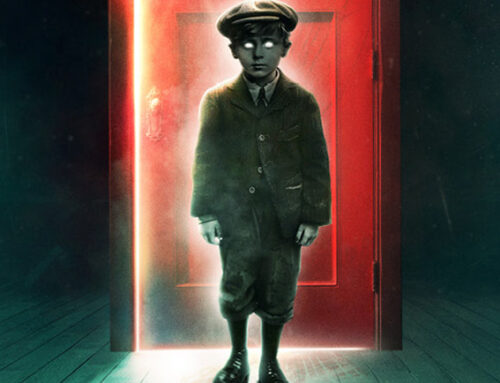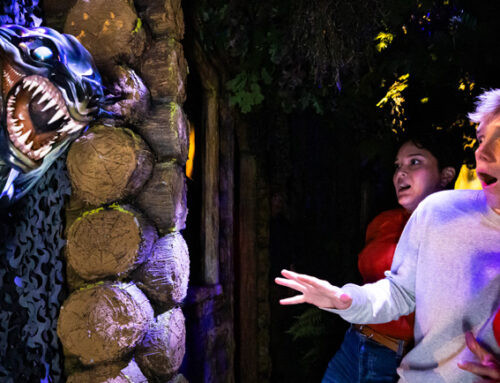VR has captured the imaginations of the HorrorBuzz team. It’s easy for us to see the potential VR has for the horror industry, and the more projects we see the more excited we become.
 Andrew Cochrane and the Mirada team working on “The Strain” VR Experience
Andrew Cochrane and the Mirada team working on “The Strain” VR Experience
At a meetup conference in early August, I listened to Andrew Cochrane, Technical Director of Mirada Studios, talk about the future of VR and how it applies to the VR promo he created for season 2 of “The Strain” on FX. Both the TV show and Mirada Studios were co-created by Guillermo del Toro, so a love of horror runs through this project’s (vampire) blood!
After the meetup, Cochrane invited me to Mirada’s offices to chat and show me the promo. When I arrived, Cochrane and I shook hands and got right down to business as he handed me an Oculus VR headset.
As Taylor wrote in his review of “The Strain”, in this experience you go through a two-minute action sequence where you are first seeking vampires, then are chased by said vampires, and lastly, you are bitten by one. There is an intensity to all this, but it wasn’t nearly as intense as what I witnessed when I went through “Catatonic” last month. Cochrane says that this is on purpose.
“Horror makes a lot of sense in VR,” he says. “For starters, you’re immersed in this world, and in the real world you’re vulnerable, as your eyes and ears are compromised. So you already enter VR a little scared. No matter what you’re seeing, you go into it with a bit of dread.”
Which is why, he explains, “The Strain” VR experience is more of an action sequence than a horror sequence. “We don’t want people’s first experience with VR to be their last,” he says. “If you make someone [motion] sick or give them post-traumatic stress disorder, they’re never going to try this again. I have the ability to ruin your day,” he tells me. “It’s a great responsibility.”
Cochrane loves haunted houses, and feels that VR experiences and haunted houses share a lot of the same DNA. “You’re trying to figure out how many people can you get through your experience at the same time, how realistic of an experience it is, and what story you can tell with the time you have.” He cites Delusion as a haunt he greatly admires. I mention the recent announcement that they are going to be open year-round beginning in 2016, and he smiles, “Finally!”
I asked him what he thinks makes a good VR sequence, and he feels that it is all about giving the viewer an experience. “Think of the camera as your audience,” he tells me. “You need to tell it a story.”
“There are 360 videos of people standing on top of a mountain, but after you get past the initial ‘wow’ factor, there’s nothing else. Companies will come to us and say they want us to put a 360-degree rig inside of their car and race it around the Le Mans racetrack, but that track is nine minutes long. Unless there’s a story to go with it, you’re gonna lose viewer interest after the first 30 seconds.”
I mention to him that I had recently seen the VR promo for SONY’s “The Walk”, Robert Zemeckis’ film about Philippe Petit’s 1974 tightrope walk across the Twin Towers. In the VR promo, the viewer does the tightrope walk 1,350 feet above Manhattan. The experience is breathtaking and it allowed me to experience something I would never get the opportunity to experience otherwise — a monumental moment in time. A piece of history.
I tell Cochrane that as I was waiting for my turn to try it out, people in front of me refused to move. Even though their feet were firmly planted on the ground, inside of their mind they thought they were about to step out onto the tightrope.
“We have to be cautious how we move forward,” he says.
“With great power comes great responsibility?” I joke.
“Exactly.”










